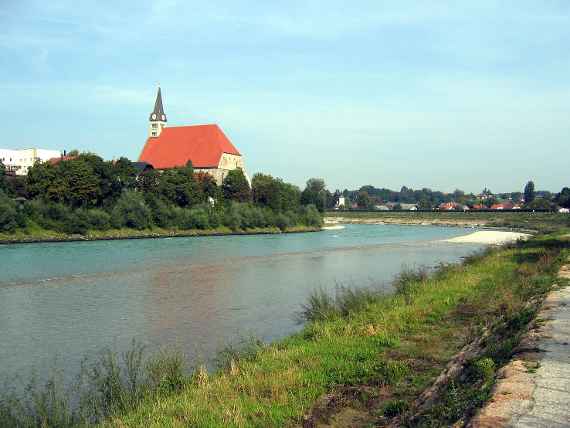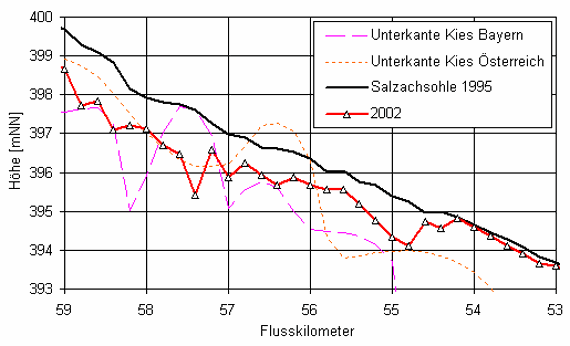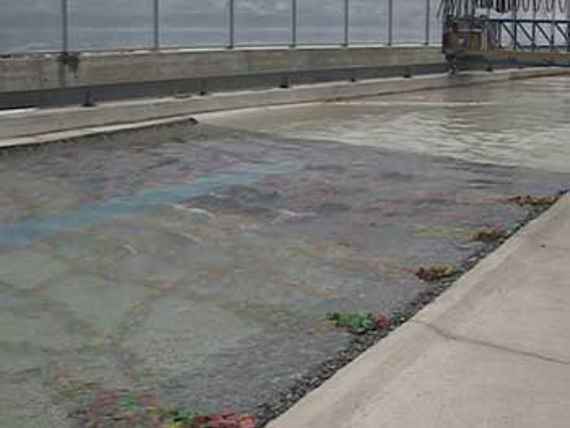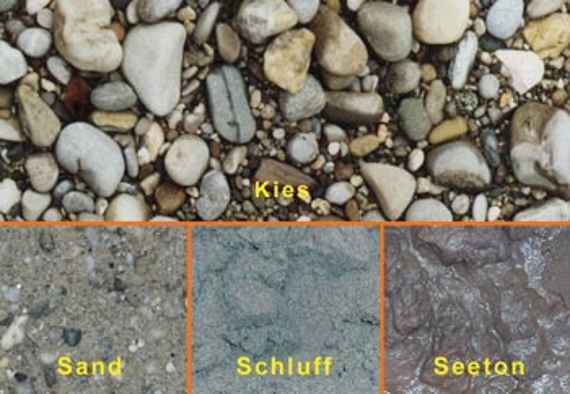The border section of the Salzach between the mouth of the Saalach and the Inn is deepening massively (in some places more than 6 metres in the last 100 years). Under the gravel bed there are finer-grained layers which can be easily and quickly removed by the river (see picture Gravel bed with fine-grained subsoil). The flood in August 2002 caused the long feared river bed breakthrough.
In the river bed, scours (holes) several meters deep were formed. This rapid deepening of the river can cause considerable damage to buildings and infrastructure. However, human lives are also endangered by such disasters.
As a result of the deepening, the groundwater level drops and the ecologically valuable floodplains of the NATURA 2000 area are increasingly being cut off from the river. Without an end to the deepening process it is impossible to preserve the ecologically valuable habitats along the Salzach in their existence.
In order to find solutions for the problems at hand, general proposals were developed in the Salzach Water Management Framework Study. The Institute for Hydraulic Engineering and Hydrometric Testing (IWB) was significantly involved in the development of these solutions. (See also project Model test border section Salzach (border section Bavaria - Austria)).
The remediation can only be carried out gradually, adapted to the water morphological development. The current focus is on securing the stabilization measures for the narrow of Laufen and the basin of Freilassing. This also includes the analysis of the latest monitoring results for the river bed development.
The IWB contributes its experience from the water management framework study to the current planning. In addition, we provide advice and support in the necessary planning steps with our hydraulic engineering know-how.
The focus is on the following areas:
- sustainable stabilisation of the river bed, taking into account the variability in the bed load balance and the uncertainties regarding floods in the future
- controlled dynamic watercourse development (the Salzach should become more lively without endangering people),
- implementation of the measures adapted to the river (steering instead of forcing),
- Application of innovative methods of hydraulic engineering (see picture: structured ramp),
- Cost minimization through the use of self-development processes.
Graphic
Translate German/English:
Höhe … height
Flusskilometer … river kilometre
Unterkante Kies Bayern … lower boundary of gravel in Bavaria
Unterkante Kies Österreich … lower boundary of gravel in Austria
Salzachsohle 1995 … river bed in 1995
Structured bed stabilization measure (ramp) for the Salzach: Model test at the experimental station of the TU Munich in Obernach, carried out in cooperation with the IWB
Gravel bed with fine-grained subsoil
Translate German/English:
Kies... gravel
Sand... sand
Schluff... silt
Seeton... sea clay
Monitoring from the implementation in winter 2008/2009 to 2019 of the river bed in the area of the loose rip rap in the narrow of Laufen shows that this bed stabilization measure is still effective. In the longer term, however, it may become necessary to extend the loose rip rap in the direction of the river upstream in accordance with the plans of the overall concept. Due to the continuing deepening of the river bed in the basin of Tittmoning, an increasingly large step is being created at the lower end of the loose rip rap, which could ultimately lead to stability problems. For this reason, a stabilization concept was developed for the lower end of the loose rip rap.




